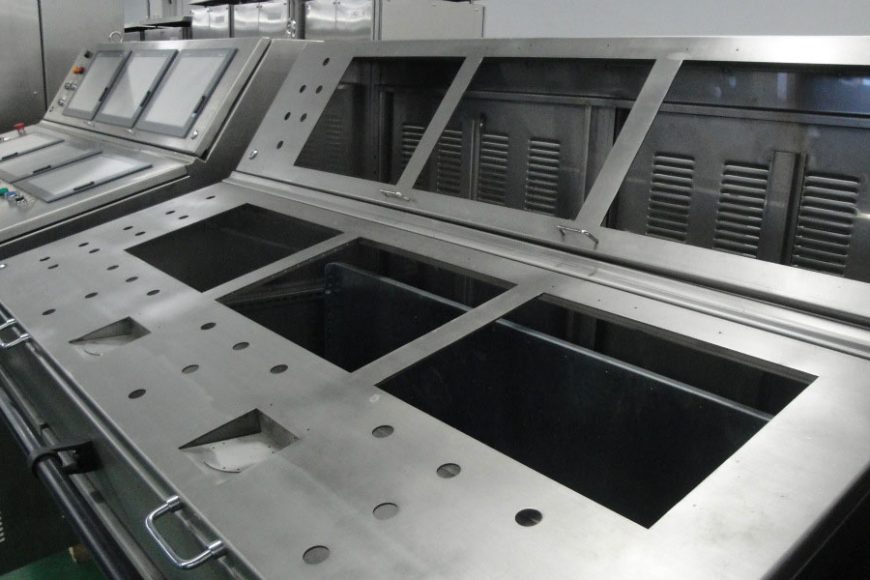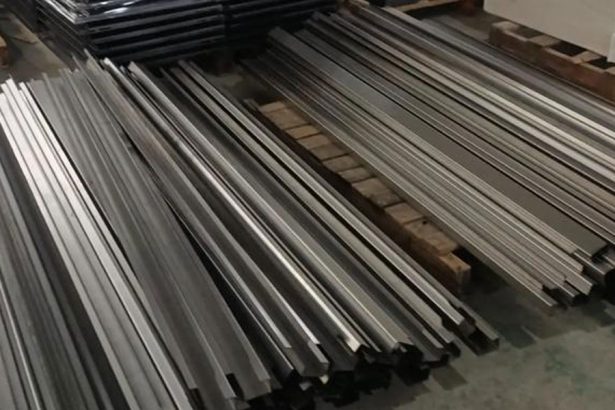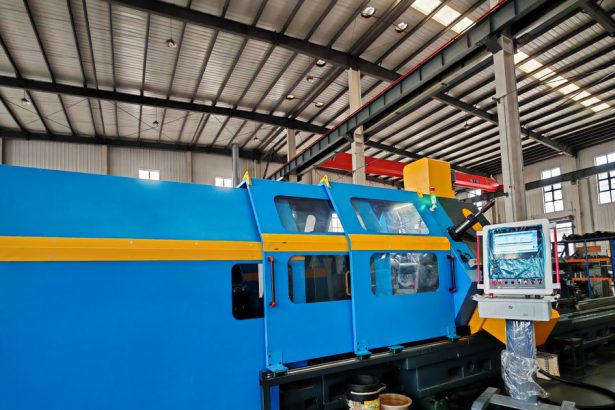Sheet metal forming (SMF) is a cornerstone of modern manufacturing, enabling the production of complex components used across industries such as automotive, aerospace, and consumer appliances. The process involves deforming metal sheets into desired shapes using molds, often under significant mechanical and thermal stresses. A critical aspect of SMF is the management of heat generated during forming, which can affect mold longevity, part quality, and production efficiency. Efficient cooling technology in sheet metal forming molds has emerged as a vital area of research, addressing challenges such as thermal gradients, cycle time reduction, and energy consumption. This article provides a comprehensive exploration of recent advancements in cooling technologies for SMF molds, focusing on their design, implementation, and impact on manufacturing outcomes. Drawing from contemporary studies, it examines conventional and innovative cooling methods, including conformal cooling, advanced materials, and additive manufacturing, while comparing their performance through detailed tables.
Background of Sheet Metal Forming and Thermal Challenges
Overview of Sheet Metal Forming Processes
Sheet metal forming encompasses a range of techniques, including deep drawing, stamping, incremental forming, and hydroforming, each tailored to specific applications. These processes rely on molds to shape metal sheets, typically made of steel, aluminum, or titanium alloys, into precise geometries. The mechanical forces involved generate heat due to friction, plastic deformation, and material flow, which can elevate mold temperatures significantly. For instance, in hot stamping of high-strength steels like 2MnB5 Boron, molds must manage temperatures exceeding 800°C during forming, followed by rapid cooling to achieve desired material properties, such as martensitic transformation.
Thermal Challenges in SMF Molds
The thermal environment in SMF molds presents several challenges:
- Thermal Gradients: Uneven temperature distribution across the mold surface can lead to inconsistent part quality, warping, or residual stresses in the formed component.
- Cycle Time: Cooling is the most time-consuming phase of the molding cycle, often accounting for 60–80% of the total cycle time. Inefficient cooling prolongs production, reducing throughput.
- Mold Wear and Corrosion: High temperatures accelerate mold wear, while cooling channels are susceptible to corrosion and scaling from impurities in cooling media, reducing heat transfer efficiency.
- Energy Consumption: Traditional cooling systems, such as open cooling towers, consume significant energy and may not provide precise temperature control, impacting sustainability goals.
These challenges have driven research into advanced cooling technologies that enhance thermal management, improve mold durability, and optimize production efficiency.
Conventional Cooling Technologies in SMF Molds
Straight-Drilled Cooling Channels
Historically, SMF molds have relied on straight-drilled cooling channels, created using conventional machining techniques like drilling. These channels are typically arranged in a linear or grid-like pattern, allowing coolant—usually water or a water-based solution—to flow through the mold and absorb heat. While effective for simple geometries, straight-drilled channels have limitations:
- Non-Uniform Cooling: Channels are often distant from complex mold surfaces, leading to uneven cooling and thermal gradients.
- Limited Flexibility: The linear nature of drilled channels restricts their ability to follow intricate mold contours, reducing cooling efficiency for complex parts.
- Pressure Drop: Long, narrow channels can cause significant pressure drops, requiring higher pumping power and increasing energy costs.
Despite these drawbacks, straight-drilled channels remain widely used due to their simplicity and low manufacturing cost. Studies indicate that they achieve cooling times of 10–20 seconds for typical SMF molds but struggle with high-aspect-ratio components.
Open Cooling Towers and Central Chillers
Open cooling towers and air- or water-cooled central chillers are traditional systems for supplying coolant to SMF molds. Cooling towers operate by evaporating a portion of the water to dissipate heat, while chillers use refrigeration cycles to cool the coolant. These systems are cost-effective for large-scale operations but face challenges:
- Temperature Control: Cooling towers cannot maintain coolant temperatures below the ambient wet bulb temperature, limiting precision.
- Energy Inefficiency: Central chillers often cool water unnecessarily, requiring additional heating via temperature control units (TCUs) to achieve optimal mold temperatures, increasing energy use.
- Fluctuations: Variations in water pressure and flow occur as machines cycle on and off, affecting cooling consistency.
Research suggests that these systems contribute to cycle times 20–30% longer than advanced alternatives due to their inability to provide uniform cooling.
Table 1: Comparison of Conventional Cooling Technologies
| Technology | Cooling Time (s) | Temperature Uniformity | Energy Consumption (kW) | Cost (USD) | Limitations |
|---|---|---|---|---|---|
| Straight-Drilled Channels | 10–20 | Moderate | 5–10 | 1,000–5,000 | Non-uniform cooling, limited to simple geometries |
| Open Cooling Tower | 15–25 | Low | 10–20 | 10,000–50,000 | Poor temperature control, high water consumption |
| Central Chiller | 12–22 | Moderate | 15–30 | 20,000–100,000 | Energy-intensive, pressure fluctuations |
Note: Values are approximate, based on typical SMF mold applications.
Advancements in Cooling Technologies
Conformal Cooling Channels
Conformal cooling channels represent a significant advancement in SMF mold design. Unlike straight-drilled channels, conformal channels are designed to follow the mold’s surface contours, maintaining equidistance from the cavity to ensure uniform cooling. Enabled by additive manufacturing (AM) techniques like laser powder bed fusion (L-PBF), conformal cooling has gained traction for its ability to reduce cycle times and improve part quality.
Design Principles
Conformal cooling channels are optimized based on key parameters:
- Channel Shape: Circular, elliptical, or complex cross-sections to maximize heat transfer and minimize pressure drop.
- Channel Size: Diameters typically range from 5–10 mm to balance coolant flow and mold strength.
- Location: Channels are placed 2–5 mm from the mold surface to enhance cooling efficiency without compromising structural integrity.
Simulation tools, such as ANSYS Fluent, are used to model heat transfer and coolant flow, ensuring optimal channel design. Studies report that conformal cooling reduces cooling times by up to 70% compared to straight-drilled channels, with temperature uniformity improved by 50%.
Manufacturing Techniques
Additive manufacturing, particularly L-PBF and laser powder deposition (LPD), enables the fabrication of complex conformal channels that cannot be achieved with traditional machining. L-PBF offers high precision for metal molds, while LPD is suited for multi-material molds. Hybrid approaches combining L-PBF with computer numerical control (CNC) milling further enhance dimensional accuracy, though costs remain a barrier.
Applications
Conformal cooling is particularly effective for high-aspect-ratio parts, such as titanium bipolar plates used in proton exchange membrane fuel cells (PEMFCs). Research demonstrates that conformal channels increase the forming depth of microchannels by 20–30%, improving PEMFC efficiency.
Closed-Loop Fluid Coolers
Closed-loop fluid coolers have emerged as an energy-efficient alternative to open cooling towers. These systems use heat exchangers and pre-cooling chambers to deliver clean, temperature-controlled water to molds. Key advantages include:
- Consistent Temperature: Maintains coolant temperatures within ±1°C, reducing thermal gradients.
- Reduced Corrosion: Closed systems minimize exposure to oxygen and impurities, extending mold life.
- Energy Savings: Up to 30% lower energy consumption compared to central chillers due to precise temperature control.
Closed-loop systems are often paired with TCUs at each molding machine, allowing independent temperature regulation. This setup has been shown to reduce cycle times by 10–15% for complex SMF molds.
Elastocaloric Cooling Materials
An innovative approach to mold cooling involves elastocaloric materials, such as nickel-titanium (Ni-Ti) alloys, which exhibit a reversible phase transformation when subjected to mechanical stress, releasing or absorbing heat. Researchers at the University of Maryland have developed a Ni-Ti-based elastocaloric material using 3D printing, demonstrating:
- High Efficiency: Cooling capacities comparable to vapor compression systems but without refrigerants.
- Durability: Maintains performance after one million cycles, addressing fatigue concerns.
- Eco-Friendliness: Eliminates the need for high-global-warming-potential refrigerants.
While still in the experimental stage, elastocaloric cooling could revolutionize SMF mold cooling by integrating cooling elements directly into mold structures, reducing reliance on external cooling systems.
Table 2: Comparison of Advanced Cooling Technologies
| Technology | Cooling Time (s) | Temperature Uniformity | Energy Consumption (kW) | Cost (USD) | Applications |
|---|---|---|---|---|---|
| Conformal Cooling Channels | 3–8 | High | 3–8 | 10,000–50,000 | Complex geometries, high-aspect-ratio parts |
| Closed-Loop Fluid Cooler | 8–15 | High | 5–12 | 15,000–80,000 | General SMF, precision molding |
| Elastocaloric Cooling | 5–10 (projected) | Moderate (projected) | 2–5 (projected) | 50,000+ | Experimental, high-efficiency cooling |
Note: Elastocaloric cooling values are projections based on current research.
Critical Cooling Rate in Hot Forming
Importance of Critical Cooling Rate
In hot forming processes, such as hot stamping of high-strength steels (e.g., 2MnB5 Boron), the critical cooling rate is a pivotal parameter. It determines the ability to achieve a martensitic transformation, which enhances material strength and hardness. The critical cooling rate is defined as the minimum rate at which austenite transforms directly to martensite, typically 20–30°C/s for boron steels.
Factors Influencing Critical Cooling Rate
Several factors affect the critical cooling rate in SMF molds:
- Coolant Flow Rate: Higher flow rates increase turbulence, improving heat transfer. A Reynolds number above 5,000 ensures turbulent flow, enhancing cooling efficiency.
- Cooling Medium: Water is the most common coolant due to its high heat capacity, but additives like ethylene glycol can improve performance at lower temperatures.
- Mold Material: Materials with high thermal conductivity, such as copper alloys, enhance cooling rates but may compromise mold strength.
- Channel Design: Conformal channels reduce thermal resistance, allowing faster cooling compared to straight-drilled channels.
Research indicates that optimizing these factors can achieve cooling rates up to 50°C/s, exceeding the critical threshold for most high-strength steels.
Experimental Insights
Experiments on 2MnB5 Boron steel molds have shown that cooling channels with a diameter of 8 mm and a flow rate of 10 L/min achieve a cooling rate of 35°C/s, sufficient for martensitic transformation. However, scaling and corrosion in channels can reduce this rate by 10–15% over time, necessitating regular maintenance.
Additive Manufacturing in Cooling System Design
Role of 3D Printing
Additive manufacturing has transformed the design and fabrication of SMF mold cooling systems. Techniques like L-PBF and direct metal laser sintering (DMLS) enable the creation of complex geometries, such as conformal cooling channels and lattice structures, that enhance thermal performance.
Conformal Cooling Channels
As discussed, AM allows the production of conformal channels that follow mold contours, reducing cooling times by 68–74% in some cases. For example, a study on injection molding molds adapted for SMF reported a 70% reduction in cooling time using L-PBF-fabricated conformal channels.
Lattice Structures
Lattice structures, integrated into conformal cooling cavities, increase mechanical strength while maintaining high coolant flow. Research using ANSYS simulations demonstrated that lattice-reinforced cavities achieve cooling times 68.5–74.2% lower than traditional designs, though only specific configurations match the mechanical performance of solid molds.
3D-Printed Inserts
3D-printed cooling inserts, such as those made from steel or copper alloys, are used for localized cooling in high-heat areas, such as lifter heads or slide noses. These inserts can reduce cycle times by 10–20% and improve part quality by minimizing thermal gradients.
Challenges of AM in Cooling Systems
Despite its advantages, AM faces challenges:
- Cost: L-PBF and DMLS are expensive, with equipment costs ranging from $100,000 to $1 million.
- Surface Finish: AM parts often require post-processing to achieve the smoothness needed for efficient coolant flow.
- Material Limitations: Not all AM materials match the durability of conventional mold steels, limiting their use in high-wear applications.
Ongoing research aims to address these issues through hybrid manufacturing and advanced materials.
Thermal Interface Materials and Mold Cooling
Introduction to Thermal Interface Materials (TIMs)
Thermal interface materials (TIMs) enhance heat transfer between mold surfaces and cooling systems by filling microscopic gaps that reduce thermal conductivity. Recent advancements in TIMs, such as graphene-based composites and liquid metals, have shown promise in SMF mold cooling.
Graphene-Based TIMs
Graphene, with a thermal conductivity of 2000–5000 W/m·K, is an ideal candidate for TIMs. Research by Xin et al. developed graphene fibers using a wet-spinning strategy, achieving rapid heat transport in cooling applications. These materials can reduce mold surface temperatures by 5–10°C, improving cooling efficiency.
Liquid Metal TIMs
Liquid metals, such as gallium-based alloys, offer high fluidity and thermal conductivity (20–30 W/m·K). Their low yield strength allows them to conform to mold surfaces, minimizing thermal resistance. Studies indicate that liquid metal TIMs reduce cooling times by 10–15% in high-heat SMF processes.
Applications in SMF Molds
TIMs are applied as coatings or interlayers between mold components and cooling channels, enhancing heat transfer. For example, a graphene-coated mold surface improved cooling uniformity by 20% in a hot stamping mold, reducing cycle times by 8%. However, high costs and application complexity limit their widespread adoption.
Table 3: Comparison of Thermal Interface Materials
| Material | Thermal Conductivity (W/m·K) | Application Cost (USD/m²) | Cooling Time Reduction (%) | Limitations |
|---|---|---|---|---|
| Graphene Composites | 2000–5000 | 500–1000 | 10–20 | High cost, complex processing |
| Liquid Metals | 20–30 | 200–500 | 10–15 | Corrosion risk, handling issues |
| Thermal Grease | 1–5 | 50–100 | 5–10 | Low conductivity, degradation |
Note: Values are based on recent studies in SMF applications.
Simulation and Optimization of Cooling Systems
Finite Element Modeling (FEM)
Finite element modeling is a cornerstone of modern cooling system design, enabling researchers to simulate heat transfer, coolant flow, and mold deformation. Software like Abaqus, ANSYS, and AutoForm is used to optimize channel geometry, coolant properties, and mold materials.
Key Simulation Parameters
- Heat Transfer Coefficient: Typically 5000–10,000 W/m²·K for turbulent water flow.
- Coolant Velocity: 1–3 m/s to ensure turbulent flow (Reynolds number > 5000).
- Mold Temperature: Target ranges of 20–50°C for cold forming and 100–200°C for hot forming.
Simulations have shown that conformal cooling channels reduce peak mold temperatures by 30–40% compared to straight-drilled channels, with corresponding reductions in cooling time.
Optimization Techniques
Optimization methods, such as the Taguchi approach and principal component analysis (PCA), are used to determine optimal channel configurations. A study by Li et al. used topology optimization to design conformal channels, achieving a 20% reduction in cooling time by eliminating inefficient channel sections.
Real-Time Monitoring and Sensorization
Sensorized molds, equipped with temperature and pressure sensors, enable real-time monitoring of cooling performance. Research by Weinert et al. demonstrated that sensorized AM molds detect cooling channel degradation early, reducing downtime by 15%. These systems are particularly valuable for conformal cooling, where complex geometries make manual inspection challenging.
Environmental and Economic Impacts
Energy Efficiency
Advanced cooling technologies significantly reduce energy consumption in SMF. Conformal cooling and closed-loop fluid coolers lower energy use by 20–30% compared to traditional systems, aligning with sustainability goals. Elastocaloric cooling, if commercialized, could further reduce energy costs by eliminating refrigerant-based systems.
Cost-Benefit Analysis
While advanced cooling systems have higher upfront costs, their long-term benefits include:
- Reduced Cycle Times: Up to 70% faster production, increasing throughput.
- Extended Mold Life: Uniform cooling reduces thermal fatigue, extending mold life by 20–30%.
- Improved Part Quality: Fewer defects lower scrap rates, saving 5–10% in material costs.
A cost-benefit analysis for a typical SMF mold shows that conformal cooling systems break even within 1–2 years for high-volume production.
Table 4: Economic Comparison of Cooling Technologies
| Technology | Initial Cost (USD) | Annual Energy Cost (USD) | Cycle Time Reduction (%) | Payback Period (Years) |
|---|---|---|---|---|
| Straight-Drilled Channels | 1,000–5,000 | 10,000–20,000 | 0 | N/A |
| Conformal Cooling Channels | 10,000–50,000 | 5,000–10,000 | 50–70 | 1–2 |
| Closed-Loop Fluid Cooler | 15,000–80,000 | 7,000–15,000 | 10–15 | 2–3 |
| Elastocaloric Cooling | 50,000+ (projected) | 2,000–5,000 (projected) | 30–50 (projected) | 3–5 (projected) |
Note: Values are estimates for a medium-sized SMF operation.
Case Studies
Conformal Cooling in Bipolar Plate Forming
A 2021 study on titanium bipolar plates for PEMFCs used conformal cooling channels fabricated via L-PBF. The channels reduced cooling time from 15 seconds to 5 seconds, increasing forming depth by 25% and improving plate performance in fuel cells. The study highlighted the importance of channel placement near microchannel features.
Elastocaloric Cooling in Hot Stamping
The University of Maryland’s elastocaloric Ni-Ti alloy was tested in a hot stamping mold for 2MnB5 Boron steel. The material maintained a cooling rate of 30°C/s over one million cycles, reducing energy consumption by 40% compared to a central chiller system.
Closed-Loop Cooling in Automotive Molds
A 2016 case study by Frigel North America implemented a closed-loop fluid cooler in an automotive SMF mold, achieving a 12% reduction in cycle time and 25% lower energy costs. The system’s precise temperature control minimized part defects by 15%.
Future Directions
Integration of AI and Machine Learning
Artificial intelligence (AI) and machine learning (ML) are poised to revolutionize cooling system design. AI-driven optimization can predict optimal channel layouts and coolant parameters, reducing design time by 30–50%. ML models trained on sensor data can anticipate cooling channel degradation, enabling predictive maintenance.
Hybrid Cooling Systems
Hybrid systems combining conformal cooling, elastocaloric materials, and TIMs could achieve unprecedented efficiency. For example, a mold with graphene-coated conformal channels and elastocaloric inserts could reduce cooling times by 80% while minimizing energy use.
Sustainable Cooling Media
Research into eco-friendly coolants, such as biodegradable nanofluids, aims to reduce the environmental impact of SMF. Nanofluids with graphene or carbon nanotubes enhance thermal conductivity by 10–20%, offering a sustainable alternative to traditional coolants.
Conclusion
Efficient cooling technology in sheet metal forming molds is a dynamic field driven by the need for faster, more sustainable manufacturing. Conformal cooling channels, closed-loop fluid coolers, elastocaloric materials, and advanced TIMs represent significant advancements, each addressing specific thermal and economic challenges. Additive manufacturing has unlocked new possibilities for complex cooling designs, while simulation and sensorization enhance precision and reliability. As research progresses, the integration of AI, hybrid systems, and sustainable materials will further transform SMF, enabling manufacturers to achieve higher productivity and lower environmental impact. This article has provided a detailed overview of these technologies, supported by comparative tables and case studies, to serve as a comprehensive resource for researchers and practitioners in the field.




